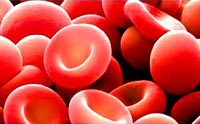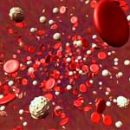Hemophilia is a blood illness associated with a violation of blood coagulation process. Depending on the cause of the disease, three types of hemophilia will be allocated.
Content
Hemophilia is a hereditary disease associated with a coagulation impairment (blood coagulation process). In this disease, hemorrhages are arising in joints, muscles and internal organs, both spontaneous and as a result of injury or surgical intervention.
In hemophilia, the danger of death from hemorrhage into the brain and other vital organs increases sharply, even with insignificant injury. Patients with a heavy form of hemophilia become disabled due to frequent hemorrhages in joints (hemarthrosis) and muscle tissues (hematoma). Hemophilia refers to hemorrhagic diathesis due to the impaired of the hemostasis plasma link (Coagulopathy).
Types of hemophilia
Hemophilia appears in early childhood due to the change of one gene in chromosome x. Three types of hemophilia are distinguished (A, B, C).
Hemophilia A (recessive mutation in the X chromosome) is caused by a genetic defect, as a result of which there is no necessary protein in the blood - the so-called factor VIII (antihemophilic globulin). Such hemophilia is considered classic, it meets most often, in 80-85% of patients with hemophilia. Heavy bleeding in injuries and operations are observed at the level of the VIII factor - 5-20%.
Hemophilia B is caused by a defective blood factor IX (recessive mutation in the X-chromosome), as a result of which the secondary coagulation cork formation is broken.
Hemophilia is caused by a defective blood factor XI (autosomal recessive mutation), is known mainly to Ashkenazov Jews.
Typically, hemophilia suffer from men (inheritance, adhesive with the floor), women act as the carrier of hemophilia, which they usually do not ill, but they can give birth to sons or subsidiaries.
The most famous carrier of hemophilia in history was Queen Victoria; Apparently, this mutation occurred in her genotype de novo, because in the families of her parents hemophilica is not registered. Theoretically, it could happen in the event that the father of Victoria was in fact not Eduard August, the Duke of Kent, and any other man (patient hemophilia), but there is no historical evidence in favor of this. Hemophilia suffered from one of Victoria's sons (Leopold, Duke Albany), as well as a number of grandchildren and great-grandchildren (born from daughters or granddaughters), including Russian Cesarevich Alexei Nikolaevich.
Symptoms of hemophilia
The leading symptoms of hemophilia A and B are elevated bleeding from the first months of life, subcutaneous, intertensive hematomas due to bruises, cuts, various surgical interventions. The manifestations of hemophilia is hematuria - blood in the urine, as well as abundant post-traumatic bleeding; Hemarthrosis of large joints, with secondary inflammatory changes, which lead to the formation of contractures and ankylosis.
Diagnosis and treatment of types of hemophilia
 For the diagnosis of hemophilia, the time of blood consumption is determined, adding plasma samples with the absence of one of the factors of the collapse.
For the diagnosis of hemophilia, the time of blood consumption is determined, adding plasma samples with the absence of one of the factors of the collapse.
Although the disease today is incurable, its flow is controlled by injections of the missing blood consumption factor, most often allocated from donor blood. Some hemophilics produce antibodies against the replaceable protein, which leads to an increase in the necessary dose of factor or the use of substitutes, such as pork factor VIII. In general, modern hemophilics, with proper treatment, live as much as healthy people.









